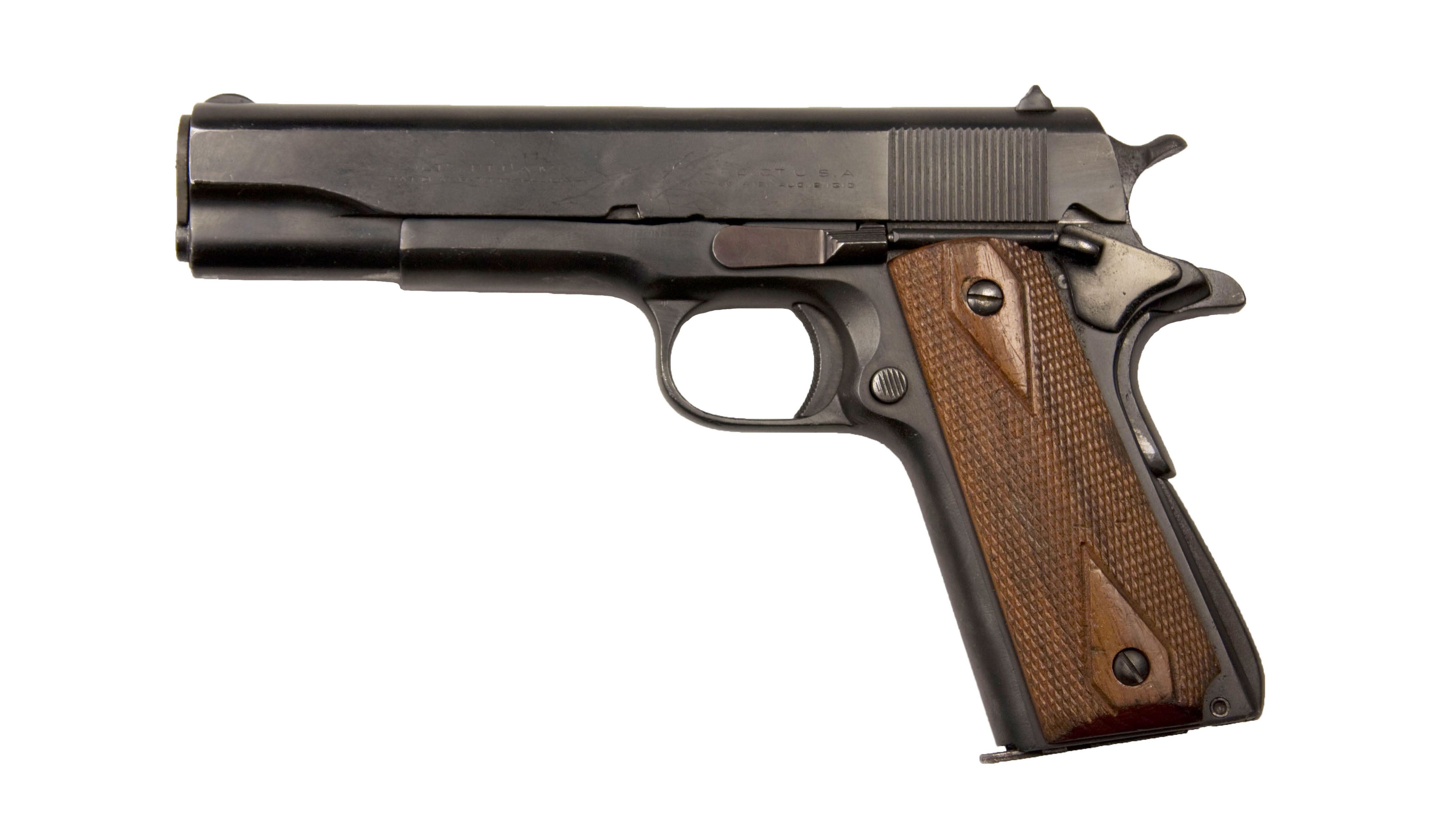Is Your Model 1911 a Problem Gun?
Is Your Model 1911 a Problem Gun?
I have a series 80 Gold Cup Colt Model 1911 that is virtually a problem free gun, it runs and feeds perfectly every single time as long as I’m using a good magazine. The magazines I use the most are original equipment Colt and also Kimber Pro Tech mags. Although Chip McCormick and Wilson combat magazines also provide excellent results.
These are all first-class high-quality magazines. There are numerous manufacturers of Model 1911’s and their clones. These include Colt, Springfield, Armory, Rock Island Arms, Sig, Remington and a whole host of others. The big thing you have to keep in the back of your mind is making magazines is an entirely different manufacturing process from making guns. With this thought you need to realize that many manufacturers of guns outsource their magazines. This results from many of them looking at cost rather than quality. The key issues in magazine manufacturing are the type of steel that is used the tempering process, type of follower that used and, most important, how the feedlips are formed and how the quality control of these dimensions is maintained. Good quality magazines result in good feeding and good cycling.
Let me give you an example of how a magazine can affect the reliability and functioning of a semiautomatic pistol. As you may remember about 1982 the U.S. Army decided to use the Beretta model 92 as its primary service sidearm. The Beretta 92 is a great gun however, when the army used this gun in Iraq, it had an unbelievable number of malfunctions and problems. Keep in mind the magazine is probably the single most critical part of any semi-automatic firearm. It doesn’t matter whether you have a Glock 17, an AK-47, and an AR15, Springfield Armory, or a Beretta. If the magazine is junk, then your gun is junk. It doesn’t matter who makes the magazine, but we’re going to use the Beretta model 92 as our example here. What happened was that the military subcontracted the magazines for the Beretta 92’s to a company called Checkmate. Checkmate is a manufacturer of good high-quality magazines. In all of the trials and extensive testing the military did the magazines perform flawlessly. However, in Iraq they presented nothing but trouble. After a lot of investigation Checkmate realized that they used a coating on the inside of the magazines with the intent of having it make the parts move easier so the follower would be more efficient. And this indeed was the case for use within the continental United States. However, the conditions that prevailed in Iraq, specifically the fine dust like sand created totally unanticipated problems so the interiors so the magazines collected dirt and grit. This would cause them to malfunction. The followers would stick, and the guns would fail to load and cycle. On the other hand, if the guns were set up with original Beretta magazines they worked flawlessly. The story goes that the military flew a bunch of the Iraqi sand to the Checkmate people and they were able to identify the problem and test it with various magazines and finally solve it. Listen to this story because if you put a substandard magazine into a quality gun, the gun is going to function at the level of the magazine.
Not every 1911 maker uses subcontract substandard magazines. You just want to be careful that when you buy your gun you don’t get some no name mag that’s going to cause your expensive Remington, Sig, Ruger, Springfield, or Colt Model 1911 to stop working. What will typically happen is even a substandard mag will work for the first 50 to 100 rounds and probably not show any issues. After that, things start to go off the rails. The primary reason for this is the heat treating and the raw material of the magazine not maintaining the very critical dimensions that are necessary in the feed lips. In other words, the lips begin to separate and then the round fails to feed properly. The other issue of course is the spring and the follower. The spring gets tired because it’s a substandard spring and/or the follower does not ride evenly up and down and is made of some type of material that abrades and therefore sticks and you end up with problems. With both of these scenarios together you have a total disaster. When that happens typically you end up sending your gun back for warranty work when in reality there’s really nothing wrong with the gun. The problem is entirely the magazine, and it’s really a shame that most gun companies blame the customer for not knowing what he’s doing, as opposed to recognizing that they’re using crap magazines that are resulting in substandard performance. The primary takeaway from this is that in order to keep your model 1911 from becoming an expensive paperweight and a source of constant aggravation, you need to purchase one each of four or five manufacturer’s magazines and work with those magazines cycle a lot of rounds through them and find out which one gives you the least headaches. My first recommendation of course is original equipment Colt also original equipment Kimber. Both of those work exceedingly well. The other manufacturers you may want to take a look at are Chip McCormick and Wilson combat, as these are also top-notch quality.
Now that you got your magazine and the function issue sorted out with your Colt Model 1911 the next thing to do is to figure out how you’re going to store, rack, organize, and index all your magazines. This is important because typically you throw your magazines loaded, and sometimes unloaded, into a bag or into a drawer or a box or someplace and each one may have a different type of mission specific ammo. How do you get the right one with the right ammo? The solution to this has been developed with the very clever Hyskore www.hyskore.com item number 30318 Single Stack Magazine Index and Organizer https://hyskore.com/products/30318-modular-single-stack-magazine-storage/. This clever little device holds 16 magazines mounts to a wall with holes drilled at 16” on center for direct mounting to studs. This allows you to put your 185 grain JHP in one slot, 230 grain hard balls in another and 200 grain Speers in another etc., and you’ll know exactly where each type of magazine is, and exactly what ammo is in each one. It is the perfect organization device.


No Comment